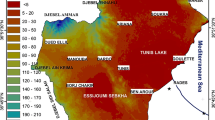Abstract
Analytic Hierarchy Process is one of the most known multicriteria decision aid methods. Nevertheless, as it relies on decision makers (DM) pairwise comparisons, a problem may occur if some comparisons are not well done. This issue, known as inconsistency, appears when an inconsistency threshold is violated. One way to deal with inconsistency is to redo all judgments, as many times as needed, in order to reach acceptable levels. This work proposes a nonlinear programming model that reduces inconsistency to zero or near zero, without needing to redo all judgments. The reduction is achieved by adjusting the original judgments in a minimum way, keeping the DM’s decisions within a tolerable range. Only discrete values are generated, so the solution respects the limits of the Saaty scale (1–9). To illustrate the efficiency of the nonlinear model, a comparison between the proposed model and other models taken from recent literature was made. The results show that the proposed model performed better, since the original judgments were changed in a minimum way, also the inconsistency was completely removed. Alternatively, if some inconsistency is allowed more original judgments can be preserved.
Similar content being viewed by others
References
Aguarón, J., Escobar, M. T., & Moreno-Jiménez, J. M. (2003). Consistency stability intervals for a judgment in AHP decision support systems. European Journal of Operational Research, 145, 382–393.
Alonso, J. A., & Lamata, M. T. (2006). Consistency in the analytic hierarchy process: A new approach. International Journal of Uncertainty, Fuzziness and Knowledge-Based Systems, 14(4), 445–459.
Benítez, J., Delgado-Galván, X., Gutiérrez, J. A., & Izquierdo, J. (2011a). Balancing consistency and expert judgment in AHP. Mathematical and Computer Modelling, 54, 1785–1790.
Benítez, J., Delgado-Galván, X., Izquierdo, J., & Pérez-García, R. (2011b). Achieving matrix consistency in AHP through linearization. Applied Mathematical Modelling, 35, 4449–4457.
Benítez, J., Izquierdo, J., Pérez-García, R., & Ramos-Martínez, E. (2014). A simple formula to find the closest consistent matrix to a reciprocal matrix. Applied Mathematical Modelling, 38, 3968–3974.
Costa, J. F. S., Wanderley, A. J. M., & Cosenza, C. A. N. (2004). Use of genetic algorithms in multicriteria methodology: A matrix solution for inconsistency. [Utilização De Algoritmos Genéticos Em Metodologia Multicritério: Uma Solução Para Inconsistência Matricial]. In Xxiv Enegep - Florianopolis, Sc, Brazil, November, 03–05.
Ergu, D., Gang Kou, G., Peng, Y., & Shi, Y. (2011). A simple method to improve the consistency ratio of the pair-wise comparison matrix in ANP. European Journal of Operational Research, 213, 246–259.
Finan, J. S., & Hurley, W. J. (1999). Transitive calibration of the ANP verbal scale. European Journal of Operational Research, 112, 367–372.
Gao, J., & Shan, R. (2012). A new method for modification consistency of the judgment matrix based on genetic ant algorithm. Applied Mathematics and Information Sciences, 6(1 SUPPL), 35S–39S.
Ghazanfari, M., & Nojavan, M. (2004). Reducing inconsistency in fuzzy AHP by mathematical programming models. Asia-Pacific Journal of Operational Research, 21(3), 379–391.
Ishizaka, A., & Lusti, M. (2004). An expert module to improve the consistency of AHP matrices. International Transactions in Operational Research, 11, 97–105.
Kahraman, C., Ruan, D., & Dogan, I. (2003). Fuzzy group decision-making for facility location selection. Information Sciences, 157, 135–153.
Karapetrovic, S., & Rosenbloom, E. S. (1999). A quality control approach to consistency paradoxes in AHP. European Journal of Operational Research, 119, 704–718.
Lamata, M. T., & Pelaez, J. I. (2002). A method for improving the consistency of judgments. International Journal of Uncertainty, Fuzziness and Knowledge-Based Systems, 10(6), 677–686.
Li, H. L., & Ma, L. C. (2008). Ranking decision alternatives by integrated DEA, AHP and gower plot techniques. International Journal of Information Technology and Decision Making, 07(02), 241–258.
Li, H. L., & Ma, L. C. (2007). Detecting and adjusting ordinal and cardinal inconsistencies through a graphical and optimal approach in AHP models to preserve most of the original comparison information due to the use of a new pair-wise comparison matrix. Computers and Operations Research, 34, 780–798.
Ozdemir, M. S. (2005). Validity and inconsistency in the analytic hierarchy process. Applied Mathematics and Computation, 161, 707–720.
Saaty, T. L. (1977). A scaling method for priorities in hierarchical structures. Journal of Mathematical Psychology, 15(3), 234–281.
Saaty, T. L. (2003). Decision-making with the AHP: Why is the principal eigenvector necessary. European Journal of Operational Research, 145, 85–91.
Siraj, S., Mikhailov, L., & Keane, J. (2012). A heuristic method to rectify intransitive judgments in pairwise comparison matrices. European Journal of Operational Research, 216, 420–428.
Tan, R. R., & Promentilla, M. A. B. (2013). A methodology for augmenting sparse pairwise comparison matrices in AHP: Applications to energy systems. Clean Technologies and Environmental Policy, 15, 713–719. doi:10.1007/s10098-012-0555-5.
Wang, T. C., & Chen, Y. H. (2008). Applying fuzzy linguistic preference relations to the improvement of consistency of fuzzy AHP. Information Sciences, 178, 3755–3765.
Wang, Y. M., Yang, J. B., & Xu, D. L. (2005). A two-stage logarithmic goal programming method for generating weights from interval comparison matrices. Fuzzy Sets and Systems, 152, 475–498.
Zhang, H., Sekhari, A., Ouzrout, Y., & Bouras, A. (2014). Optimal inconsistency repairing of pairwise comparison matrices using integrated linear programming and eigenvector methods. Hindawi Publishing Corporation Mathematical Problems in Engineering, (Vol. 2014), Article ID 989726.
Acknowledgments
The authors wish to express their gratitude to the anonymous reviewer who, wholeheartedly, gave his/her time and energy to improve the quality of our paper with many helpful suggestions and insightful comments.
Author information
Authors and Affiliations
Corresponding author
Rights and permissions
About this article
Cite this article
Pereira, V., Costa, H.G. Nonlinear programming applied to the reduction of inconsistency in the AHP method. Ann Oper Res 229, 635–655 (2015). https://doi.org/10.1007/s10479-014-1750-z
Published:
Issue Date:
DOI: https://doi.org/10.1007/s10479-014-1750-z




